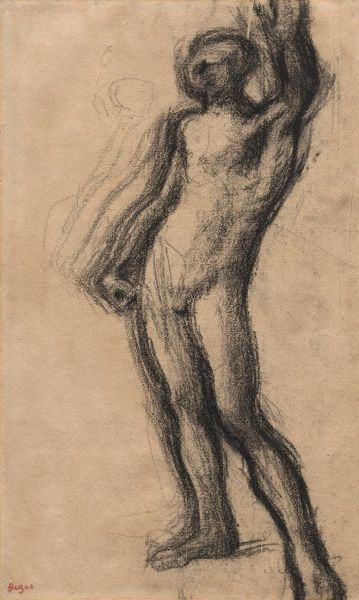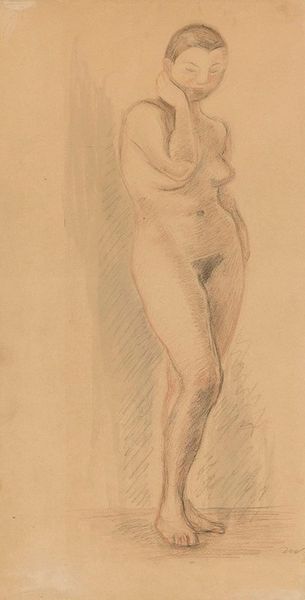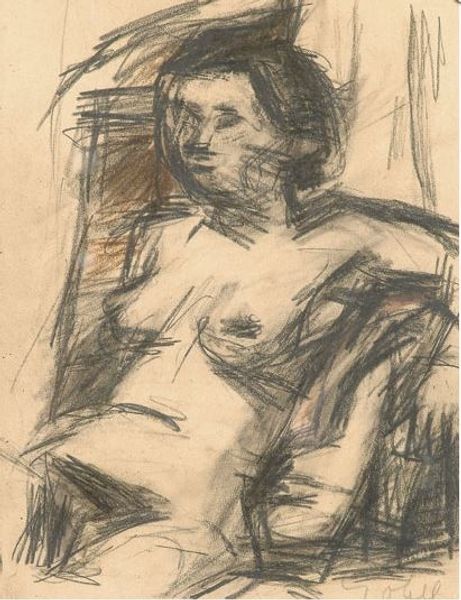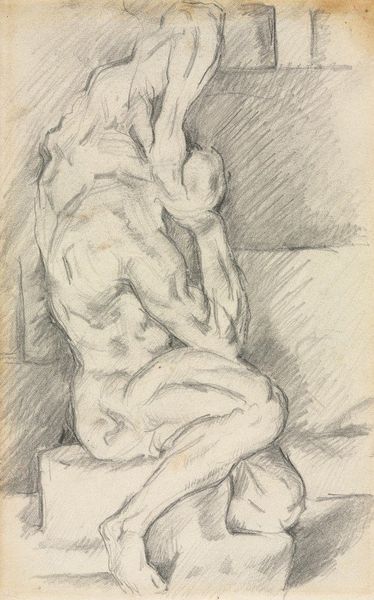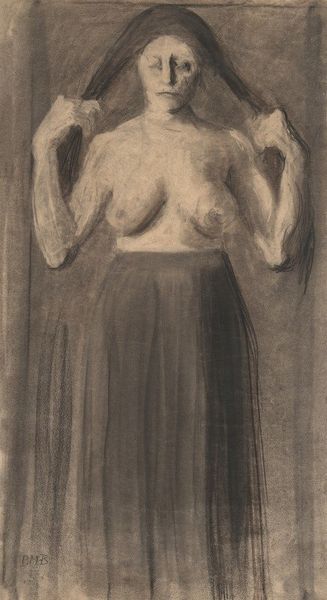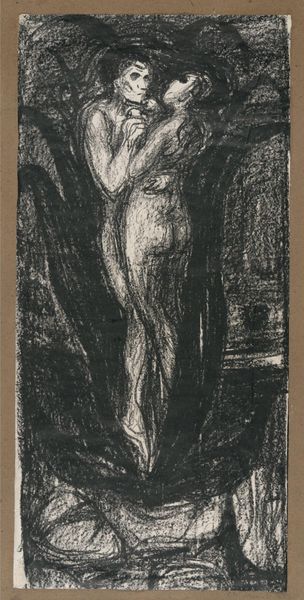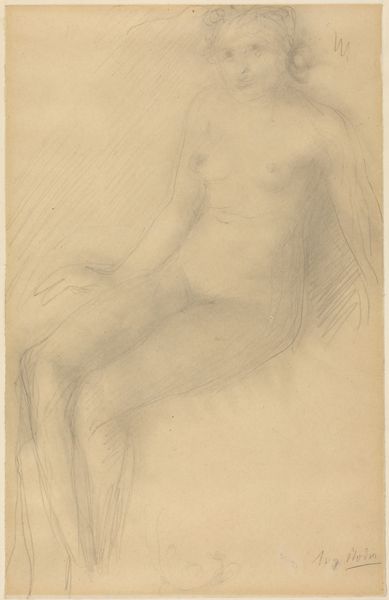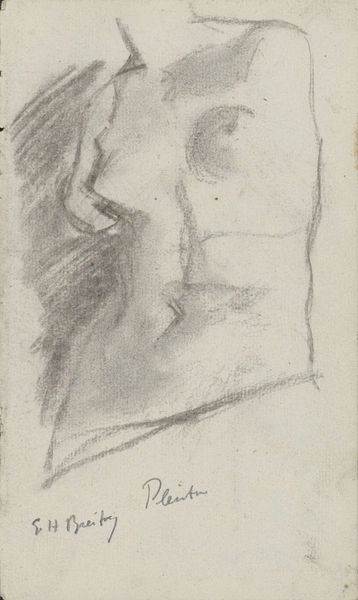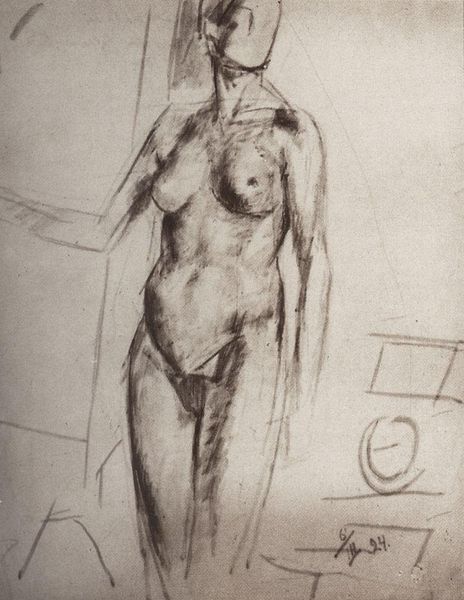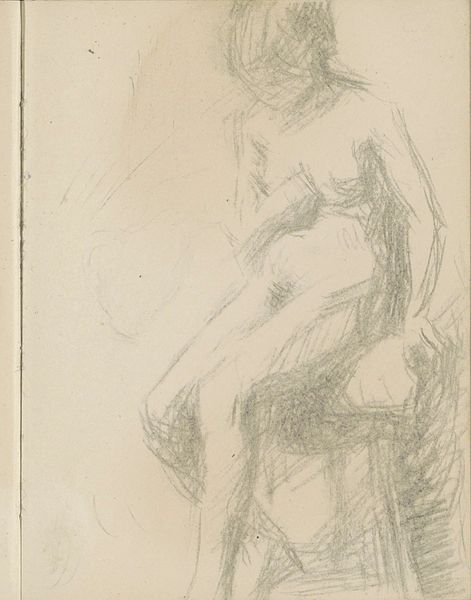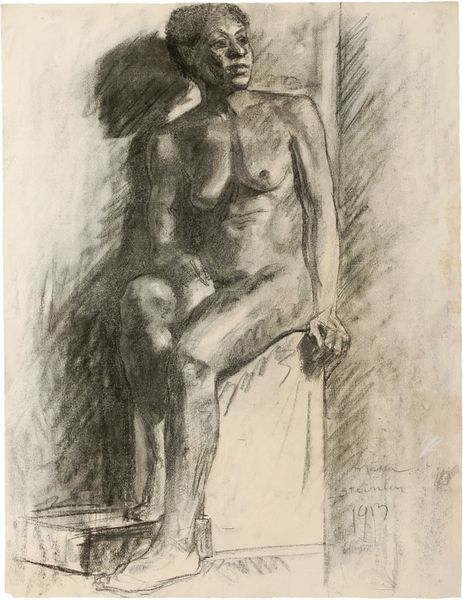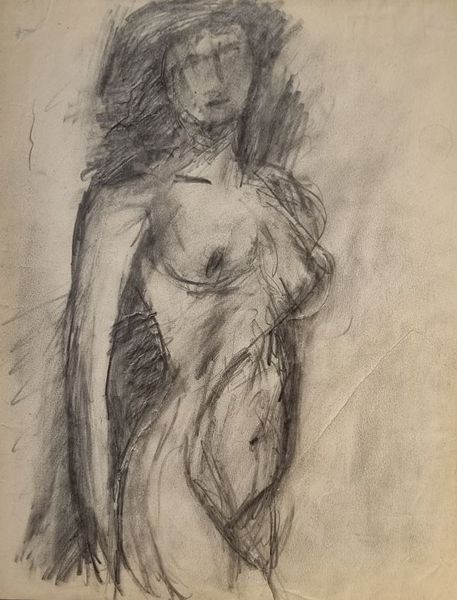
drawing, charcoal
#
portrait
#
drawing
#
charcoal drawing
#
figuration
#
charcoal
#
nude
Copyright: Bela Czobel,Fair Use
Editor: Here we have Bela Czobel’s "Sitting Nude, 60x42.5", a charcoal drawing, although the date is unknown. I am immediately struck by how informal the pose is, almost nonchalant. What do you make of this work? Curator: It's fascinating how Czobel, a Hungarian artist, utilizes charcoal to depict this figure, isn’t it? Considering the sociopolitical context of early 20th-century Europe, the public display of nudes was fraught with tension. Do you think Czobel intended to challenge or uphold established academic traditions? Editor: That's a great point. I hadn’t considered the role of exhibition spaces. I wonder if the pose is meant to reclaim agency over the representation of the nude. Perhaps moving away from the traditionally passive or idealized form? Curator: Exactly! How are women generally presented to the public at the time? Academic art often positioned women as allegorical figures, devoid of individual personality. This drawing though seems more personal. What do you observe in the execution of line and tone? Editor: There's a looseness to the drawing. It is quite gestural with broad strokes that create the form, focusing more on capturing light and shadow than precise anatomical details. That’s quite contrary to traditional representation of a nude. Curator: Yes. And does that loose style potentially affect the reception of this image for different audiences at the time? The bourgeoisie might expect tighter, more idealized portrayals. Meanwhile, avant-garde audiences might applaud this shift toward a more subjective, expressive mode of representation. It reflects a change in who art is actually for, and whom it speaks about. Editor: I see now, thank you! So it's not just a portrait, but also a reflection of changing social norms and the expanding audience of art. Curator: Precisely. Art, especially that shown to a wider audience, always exists in dialogue with the socio-political landscape of its time. Always be mindful of that interaction.
Comments
No comments
Be the first to comment and join the conversation on the ultimate creative platform.
